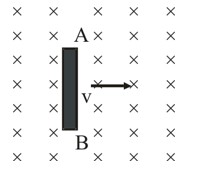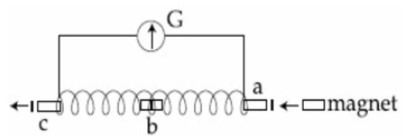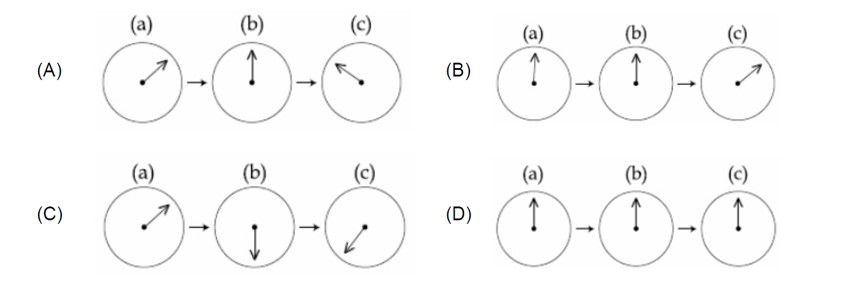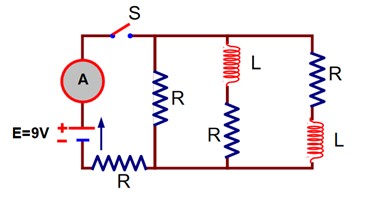6.7 A horizontal straight wire 10 m long extending from east to west is falling with a speed of 5.0 m s–1, at right angles to the horizontal component of the earth’s magnetic field, 0.30 × 10–4 Wb m–2.
(a) What is the instantaneous value of the emf induced in the wire?
(b) What is the direction of the emf?
(c) Which end of the wire is at the higher electrical potential?
6.7 A horizontal straight wire 10 m long extending from east to west is falling with a speed of 5.0 m s–1, at right angles to the horizontal component of the earth’s magnetic field, 0.30 × 10–4 Wb m–2.
(a) What is the instantaneous value of the emf induced in the wire?
(b) What is the direction of the emf?
(c) Which end of the wire is at the higher electrical potential?
-
1 Answer
-
6.7 Length of the wire, l = 10 m
Falling speed of the wire, v = 5 m/s
Magnetic field strength, B = 0.30 Wb/
The instantaneous emf induced in the wire, e = Blv = 0.30 5 = 1.5 V
Using Fleming's right hand rule, the direction of the induced emf is from West to East.
The eastern end of the wire is at a higher potential.
Similar Questions for you
Kindly go through the solution
Bv = B sin 60°
->
M = φ? /I? = (B? A? )/I? = [ (μ? I? /2R? )πR? ²]/I?
[Diagram of two concentric coils]
M = (μ? πR? ²)/ (2R? )
M ∝ R? ²/R?
(A) The magnet's entry
R =
L = 2 mH
E = 9V
Just after the switch ‘S’ is closed, the inductor acts as open circuit.
Taking an Exam? Selecting a College?
Get authentic answers from experts, students and alumni that you won't find anywhere else
Sign Up on ShikshaOn Shiksha, get access to
- 66k Colleges
- 1.2k Exams
- 680k Reviews
- 1800k Answers




